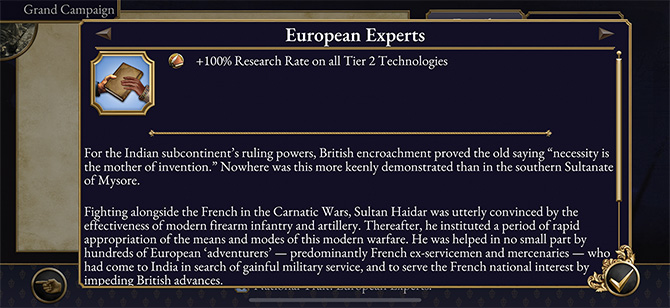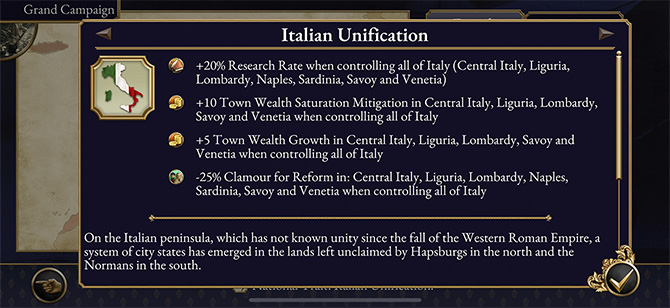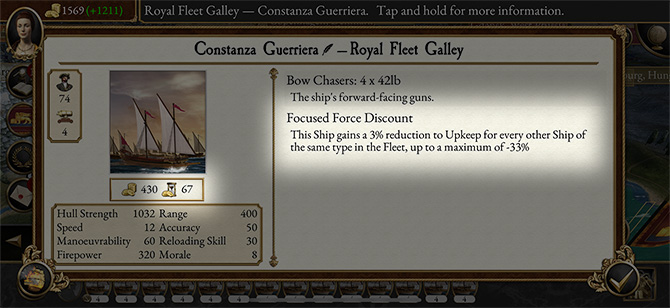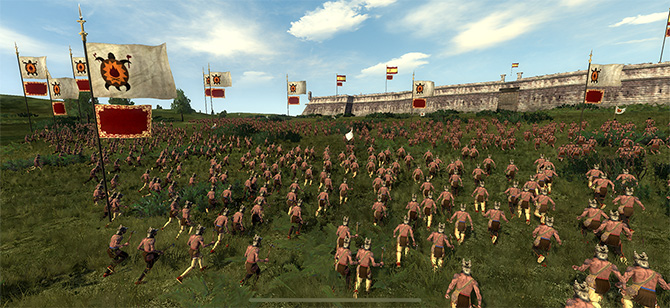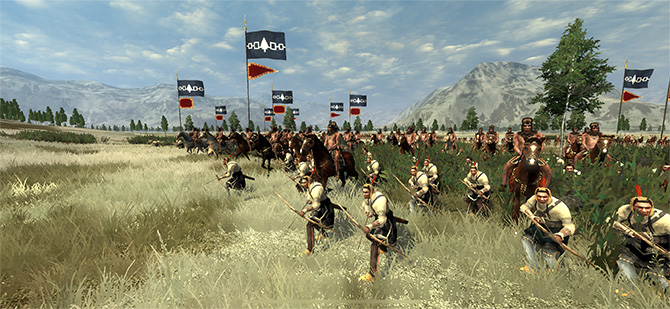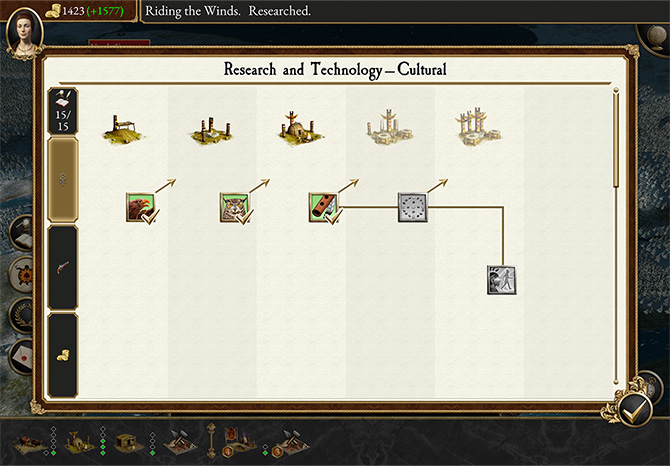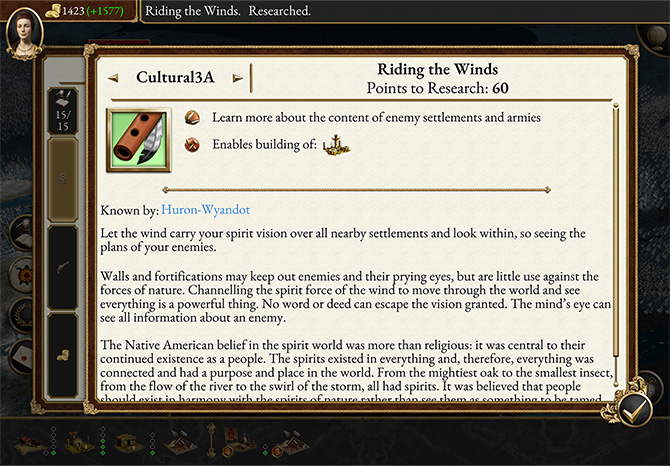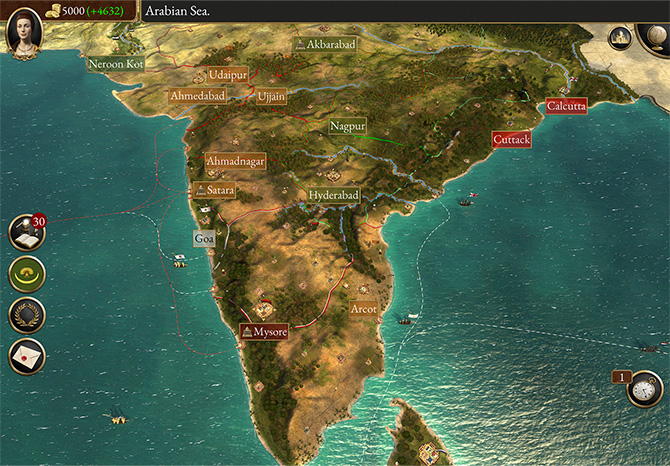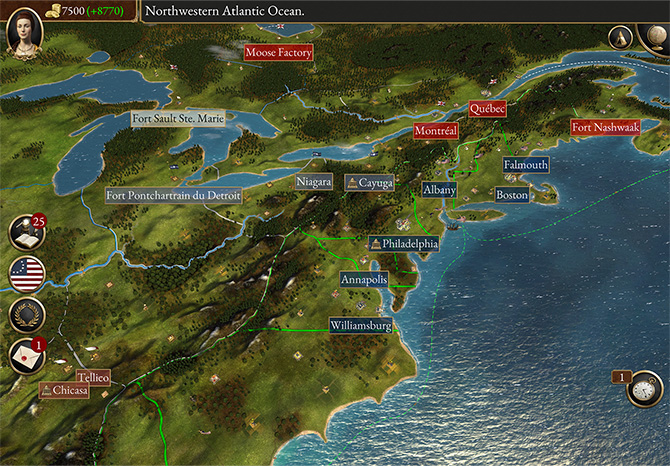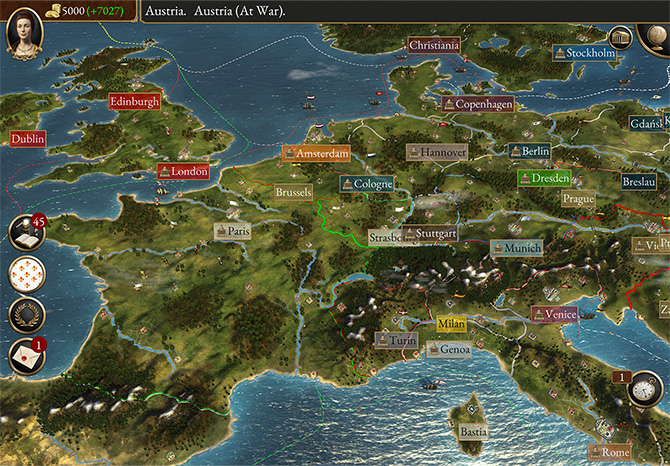Let These Facts Be Submitted to a Candid World
Blog 1 revealed that all your favourite minor nations would become playable in A New World, and teased that we’d be spilling the tea on one particular republic in a later blog. As you may have guessed, we were referring to the United States, and yes, it’ll be playable from the start of both the Grand and Late Start Campaigns.
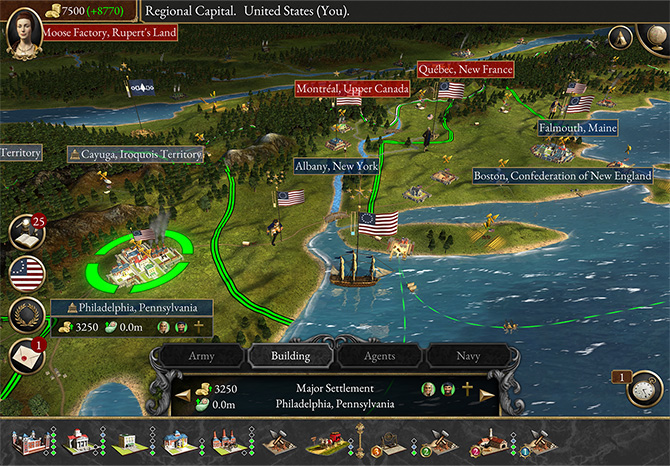
And, a third option is available for those who really want to stick it to those pesky Brits. When choosing to play as the Thirteen Colonies, you’ll begin with the particularly punishing National Trait, Taxation Without Representation. This exists to model the punitive economic measures imposed on the colonists by the British crown.
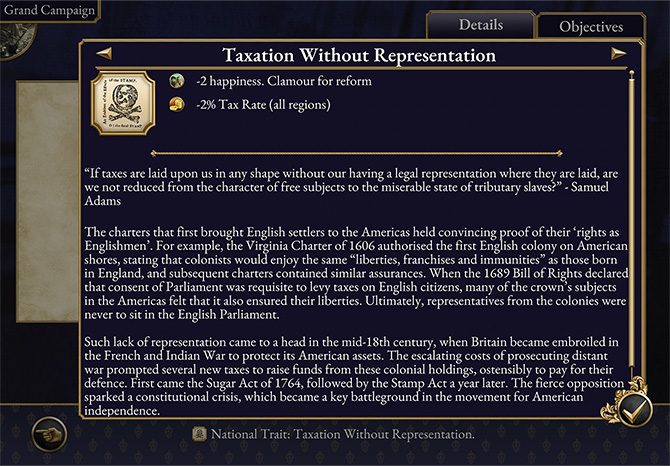
You’ll also be given a mission: grow the population of New England until a new Town emerges, then construct a centre of education in the region. This models the growth of civic society, which can provide the intellectual basis and political drive for independence.
Once this is achieved, independence will be declared. At the start of the next turn, the United States will be born, complete with star-spangled banner, an expanded unit roster, fresh diplomatic relations with the wider world, and its own powerful National Trait.
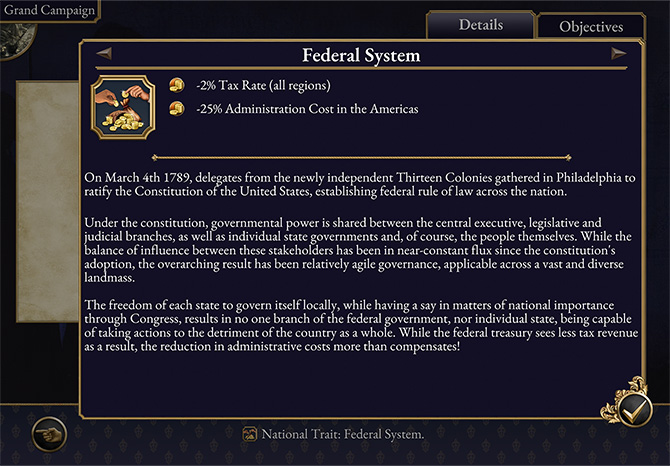
Playing Sail-y Buggers
With terrestrial matters covered, let’s finally cast our gaze to the sea.
A New World introduces fourteen new ships to Total War: EMPIRE, from the humble Carronade Dhow to the mega Santísima Trinidad. To find out more about them, we’ll gingerly unbatten the hatches and let Benedict tell us more.
Feral: Ahoy, Admiral Parker, what’s it all a-boat? Where do these ships fit into the existing roster on EMPIRE’s high seas? And remember, brevity is the soul of wit…
Benedict: Ahoy there, yeoman! Thank you for bringing me aboard for this “gam” - I’ll endeavour to be as concise as possible, but, before we engage too closely with the particulars of the new ships, let me elaborate a little on why we’ve added them.
Existing desktop and mobile players will know that we did a balance pass to adjust how many units, and of what types, the player would be able to afford at different stages of the campaign. When it came to the naval gameplay, this pass was quite conservative: EMPIRE’s early and mid-game naval experience was already pretty spot-on. As a simulation of 1700s naval battles, the game covers the main ship types very well.
However, once we started planning A New World’s Late Start Campaign, it became clear that we’d need to expand the late-period naval roster with ships from NAPOLEON. This is because the dates of that campaign (1783-1823) overlap with that game’s period (1796-1815). Once EMPIRE extends into the early 1800s, it feels odd if certain ships, like 80-gun 3rd Rates, are not represented. And, once we started backporting the Napoleonic ships, we realised we could do more, and began thinking about a more general late-game content pass for a more sophisticated naval simulation:
Increase the quantity of ships that factions can operate once they research and construct tier 4 naval ports: The progression from tier 1 to tier 3 may be characterised by an improvement in quality, with each tier granting access to ships of increasing size and firepower. We wanted to increase the value of upgrading to tier 4, but didn’t want to continue this trend, as that would mean displacing other ships. Instead, the new ships unlocked at that tier are designed to supplement, in a cost-efficient fashion, the tier 3 ships that you’ll continue to build.
Allow for technological development to unlock superior trade ships: Galleons and Fluyts occupy an important place in the game balance, but they were old-fashioned even in 1700, let alone 1783. Modelling late-1700s trends in transport vessels, such as the emergence of carronade armaments on merchant ships and the deployment of warships en flûte, both improve historical accuracy and the ability of technologically-advanced factions to hold trade nodes.
Increase the value in researching the “Carronades” naval technology: Another feature characteristic of ship design in this late period, particularly in the English-speaking world, was the proliferation of carronades across a range of ship types, more than just the small “Carronade Frigate” currently in the game.
Define a longer-lasting niche for Galleys and Light Galleys: Galleys have their place in the early game, but get squeezed out by broadside sailing ships. Yet, galleys survived in the Mediterranean well into the mid-1700s, and galleys and oared gunboats were widely used in the Baltic until the end of the 18th century. We therefore wanted to ensure that galleys and half-galleys continued to have a place in the mid- and late-game, even if only in limited numbers.
Feral: Slow down, Benedict. It’s hard to believe, we know, but imagine for a moment that not everyone knows what en flûte means, or what a carronade is when it’s at home.
Benedict: Do they not all have copies of Admiral Smyth’s “The Sailors’ Word-Book” handy? Well if you say so, I’ll happily oblige:
En Flûte: a warship sailing “en flûte” is carrying fewer than its full complement of guns so it can serve as an armed troopship or transport. In game terms, such vessels can trade when parked on a trade node just like the proper merchant ships.
Carronade: a stubby-barrelled cannon that fires a relatively heavy projectile at relatively low muzzle velocities. In game terms, that means high firepower but short range.
Feral: Great, now we’ve cleared that up, can we finally talk about what new ships have we added?
Benedict: This is going to be a long answer, so you might want to get a cup of tea or even illustrate it with some images.
Feral: Oh, this is going to be the long answer?!
Benedict: Now, we've added new ships to all the major categories, so why don't we list these category-by-category:
- Auxiliary Ships
-
Corvette
This fast, mini-frigate has the same “auxiliary” unit ability as Brigs and Sloops, but enjoys superior firepower and hull strength. It also receives an additional “Economies of Scale” discount to its upkeep cost which increases in proportion to how many other frigates you control. Used in limited numbers as part of a developed navy, it can have a very low upkeep indeed!
- Frigates
-
Late 5th Rate Frigate
An upgrade to the 6th Rate and an alternative to the larger 5th Rate two-decker, this frigate is even faster and more manoeuvrable. Featuring a main gundeck of long-range 18lbers and supplemental 32lber carronades, this versatile vessel will prove its worth in any fleet.
-
4th Rate Frigate
A very late-game unlock, this upgrade to the Razee features stronger cannons on its main gundeck and an upper deck of fearsome 42lber carronades. Fast, solidly-built and devastating up-close!
- Ships-of-the-Line
-
Carronade 4th Rate
It’s HMS Glatton! With its all-carronade armament, this vessel has more firepower than anything other than the heaviest 3-deckers, and at a lower cost than the normal 4th Rate. Great for destroying other all-carronade vessels and finishing off weakened ships-of-the-line.
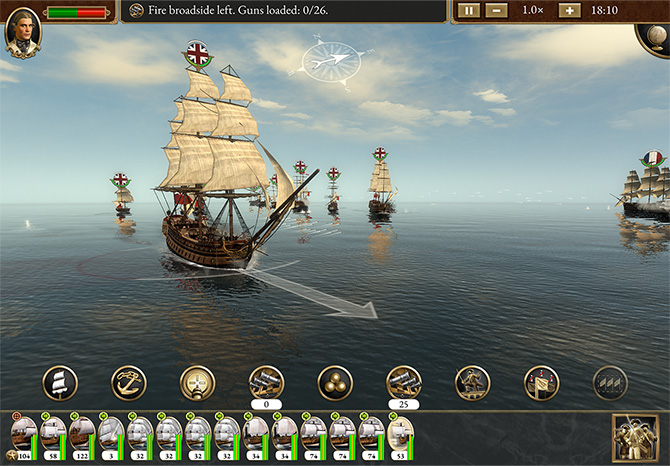
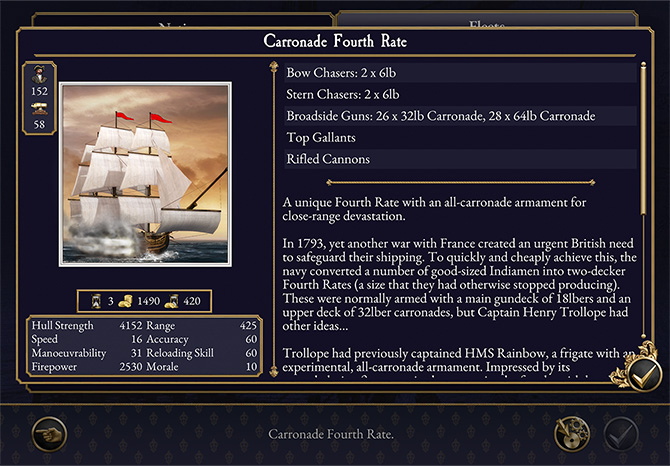
-
Light 3rd Rate
Superior to a 4th Rate yet cheaper and handier than a 74, this vessel has an “Economies of Scale” discount to its upkeep which increases in proportion to how many other ships-of-the-line you control. A useful addition to larger fleets, well-suited to dealing with enemy frigates.
-
80-gun 3rd Rate
An elite 3rd Rate with the same sailing performance as a 74 but significantly more firepower. A little pricey, but worthwhile for adding some extra punch to your line-of-battle when fighting the enemy’s strongest fleets.
- Flagships
-
Santísima Trinidad
“El Ponderoso” joins us at last! This 4-decker(!) heightens the advantages and disadvantages of the Heavy 1st Rate: more guns, more hull strength and a bigger crew, yet even more expensive and sluggish.
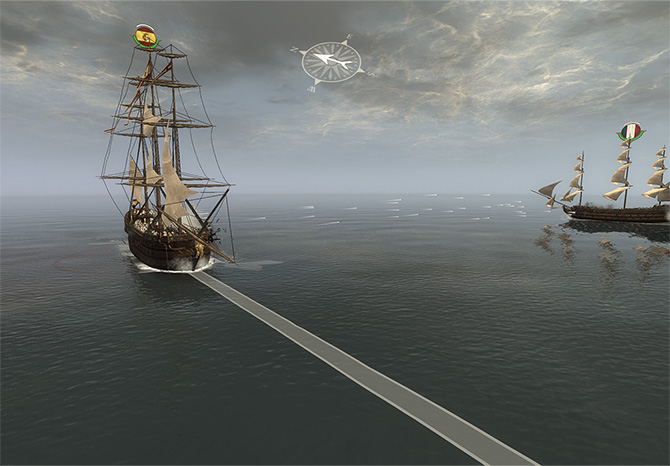
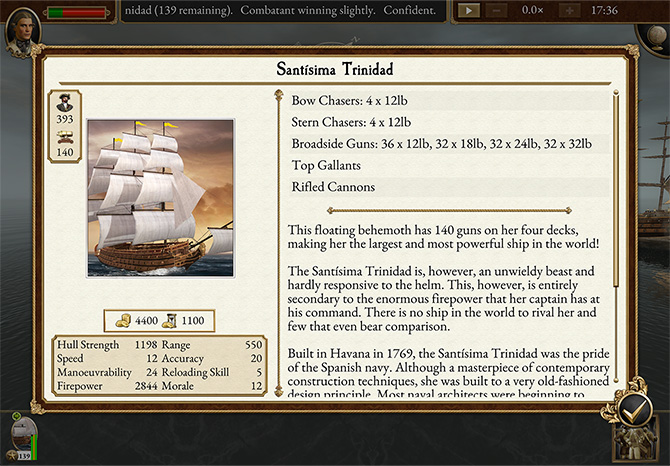
-
Heavy 1st Rate (Uniform Armament)
Another very late-game unlock, this improvement to the already-potent Heavy 1st Rate swaps its guns for various grades of 32lber for even more firepower.
- Trade Ships
-
Carronade Indiaman
An Indiaman armed with 18lber carronades instead of 9lber long guns. It has a slightly lower upkeep cost than a normal Indiaman, allowing it to generate more profit over term.
-
Carronade Dhow
A dhow armed with a powerful 32lber carronade in its forward mount. Unlike with the Indiaman there’s no reduction in base upkeep, but the new “Sea Fencible” discount dramatically reduces upkeep when garrisoning a port. This gives the Carronade Dhow double utility as both a trade ship and a coastal defence gunboat.
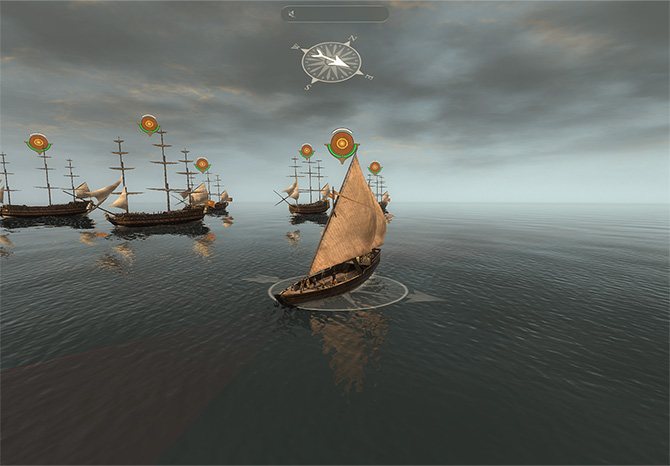
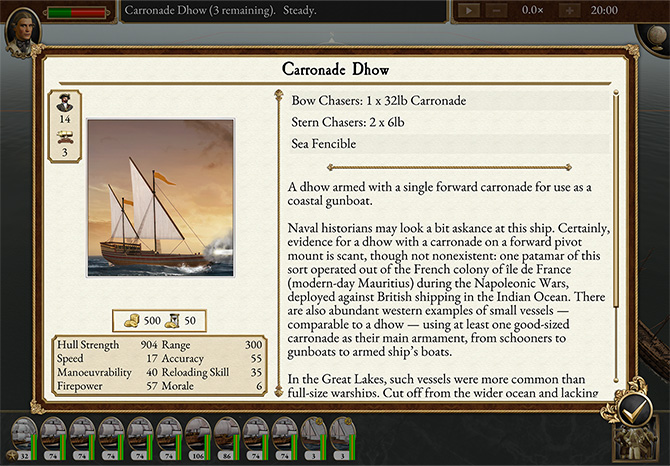
-
3rd Rate en Flûte
2nd Rate en Flûte
These two ships trade some of the firepower of their respective types in exchange for reduced upkeep cost and the ability to operate as trade ships. In this way, they may be thought of as improved versions of the Fluyt and Galleon respectively, but can only be recruited in limited numbers.
- Galleys
-
Royal Fleet Galley
The existing Galley, augmented with a new “Focused Force” discount. This gives each individual Royal Fleet Galley an upkeep discount for each additional Royal Fleet Galley in the same fleet. This is designed to make galley-centric formations more economically viable.
-
Light Galley (Sea Fencible)
With the same “Sea Fencible” attribute as the Carronade Dhow, but far greater firepower, this oared gunboat can supplement the defences of major ports at a very low cost.
Feral: Great, but sadly that’s all we have time for, Benedict. Please re-batten the hatches on your way out.
Benedict: No, wait, I'm not done yet! We need go into how these new ships will inform the player's fleet compositions and tactics! And the historical background! And Paixhans' system of uniform high calibre! Get back here! I-
So there you have it, a (very) comprehensive accounting of all the naval novelties coming in A New World!
There’s only two days to wait until A New World arrives on iOS & Android! In the meantime, be sure to catch up on Blog 1, which covers the expansion’s newly playable nations, and Blog 2, which offers a deep dive into the two new campaigns on offer.



